Sam van Aken’s exhibition explores agricultural diversity, food security, and cultural preservation.
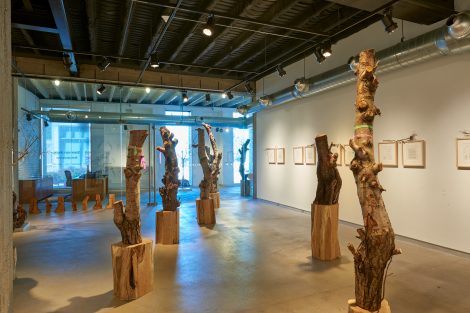
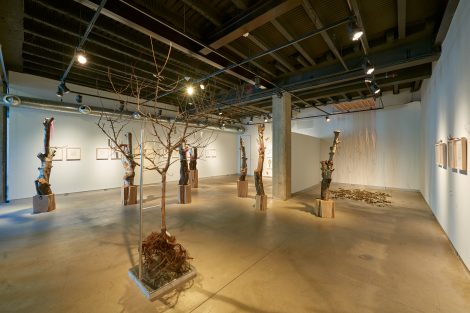
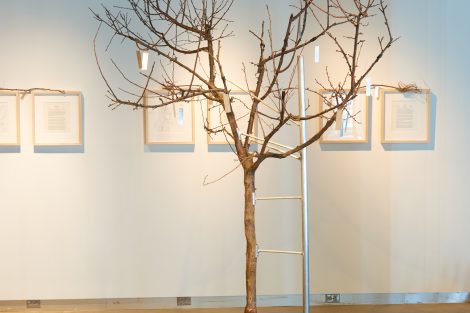
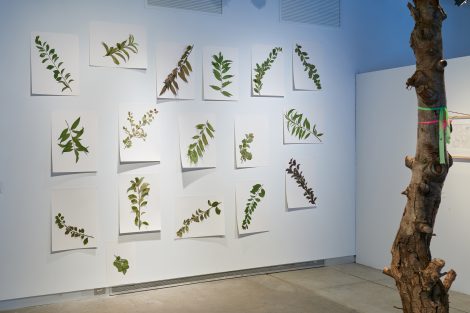


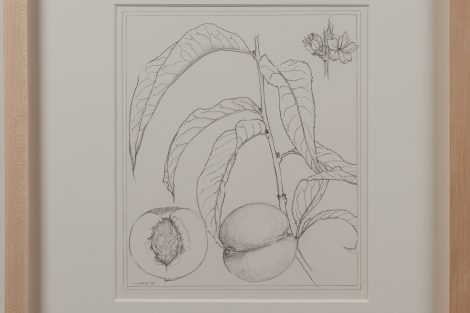
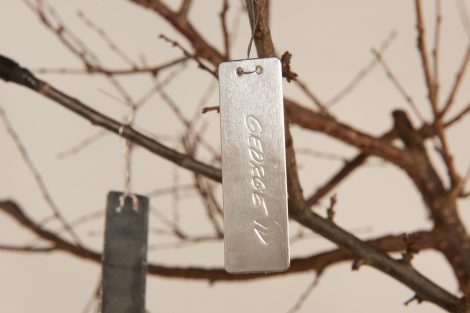
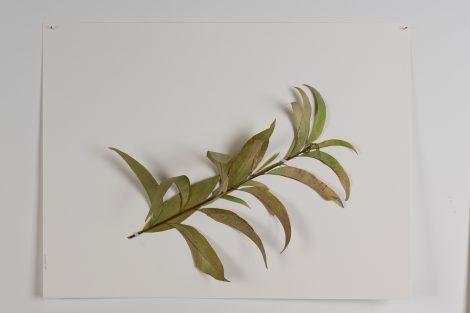
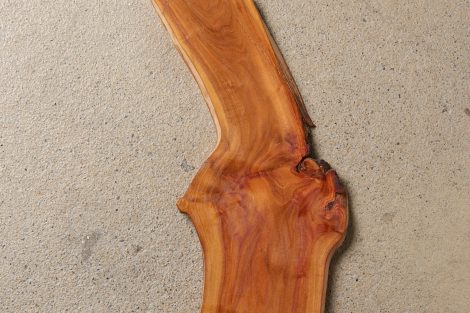
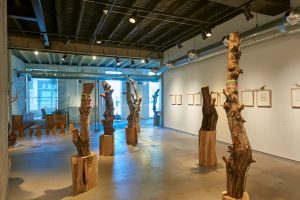


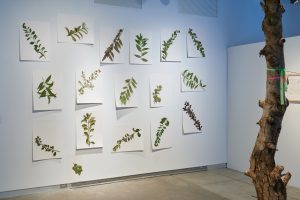
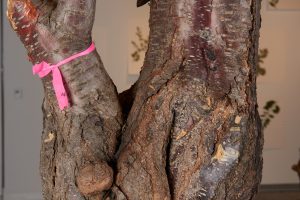
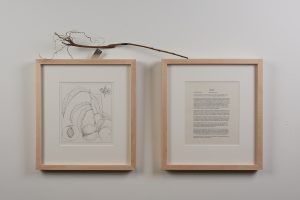
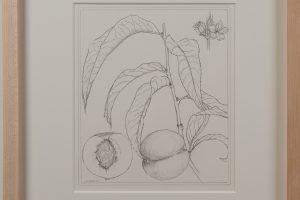
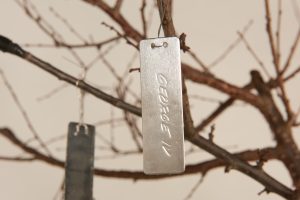

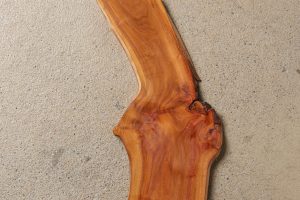
Lafayette College Art Galleries presents Sam van Aken: Streuobstwiese, an exhibition that transforms the gallery into an orchard unlike any you’ve seen before, through December 9 at the Grossman Gallery, located in the Williams Visual Arts Building, 243 North Third Street, Easton, PA. Van Aken will give an artist’s talk October 19 at 4:10 p.m. at the Williams Center for the Arts, 317 Hamilton Street, Easton, on College Hill. The lecture will be followed by a reception at the Grossman Gallery.
The exhibition and related programs are free and open to the public.
###
Among remnants of antique variety stone fruit trees, bare-rooted young trees, peach whips suspended from the ceiling, delicate botanical drawings, and herbarium specimens, Sam van Aken’s exhibition considers issues of agricultural and cultural preservation, and food security and diversity.
Streuobstwiese is van Aken’s project to establish orchards of heirloom fruit trees and evolved out of the his Tree of 40 Fruit projects in which he grafts multiple varieties of stone fruits onto a root stock, “collapsing” an orchard into a single tree. He describes the Tree of 40 Fruit as a form of conservation, preserving rare, unknown, forgotten cultivars of stone fruit—peaches, apricots, plums, almonds, cherries, plumcots, and nectarines. Van Aken’s proposal to establish Streuobstwiese (pronounced strī-oːpst-vēzə)—sixteenth-century German for “community-owned, meadow orchard”—“explodes” the Tree of 40 Fruit, creating expansive orchards with 200 to 300 individual, antique and heritage fruit trees.
“This experiential setting is simultaneously aesthetic, community-based, educational, research-oriented and, ultimately, a form of conservation that attempts to address threats to food security and loss of diversity, preserving not just agriculture but the culture that surrounds these increasingly forgotten fruits.”
With the rise of monocultures and factory farming, only a few varieties of vegetables and fruits are commercially grown across the United States. Ultimately this not only affects the diversity of foods available for the table; it is also a major national security threat. The Defense Advanced Research Projects Agency (DARPA) of the Department of Defense has identified lack of food security as a threat to the country. According the DARPA, “Agricultural food production is a fundamental human activity that contributes to defense preparedness, social stability, and economic vitality. However, food production can be jeopardized by natural and man-made threats such as viruses, pests, fungi, herbicides, drought, pollution, salinity, flooding, and frost.” If, for example, commercially grown varieties contract a virus or fungus, which commonly occurs, it could devastate the food supply.
Van Aken envisons Streuobstwiese as an archive, a resource from which to reintroduce heirloom and antique fruits as well as traditional methods of growing them. It is also an aesthetic experience—visual, olfactory, and gustatory. Furthermore, it preserves culture itself. Our history and culture are embedded within food, and each of the individual fruit varieties in the Streuobstwiese reveals a history. From the peaches originally planted in the first Spanish missions in South America, then brought northward by Native Americans who propagated the trees for centuries, to apricots brought by Chinese immigrants who came to the country to work on the transcontinental railroad, the Streuobstwiese is a time machine that lets us taste foods that in some cases are a millennium old. It is a mnemonic site that preserves diversity in the age of industrial and manufactured food.
In November 2016, van Aken was joined by members of the Lafayette College and Easton communities on the Karl Stirner Arts Trail to plant a Stanley Prune Plum (Prunus domestica)—the first step in a Tree of 40 Fruit. This tree will serve as the base. Over a three-year period, budstock from 40 different heirloom and antique stone fruit trees will be collected from local orchards and grafted onto the base to create a unique Tree of 40 Fruit for Easton.
Sam van Aken, born and raised in Reading, Pa., grew up on a small dairy farm surrounded by cherry and peach orchards. His multidisciplinary practice includes sculpture, video, and installation art, exploring the intersections between nature and culture. He is the 2017 Detwiller Visiting Artist and the Karl Stirner Arts Trail Artist-in-Residence. Streuobstwiese is presented in conjunction with the Karl Stirner Arts Trail Tree of 40 Fruit project. Van Aken is Associate Professor of Art at Syracuse University. He is represented by Ronald Feldman Fine Arts in New York.
###
Lafayette is located in Easton, Pennsylvania, on the scenic Delaware River, 72 miles from New York City, and 60 miles from Philadelphia. For more information and gallery hours, visit the art galleries’ website: galleries.lafayette.edu.
Easton is served by Trans-Bridge Lines, a commuter bus from the Port Authority Bus Terminal in New York City.
For more information, contact: Michiko Okaya, director of art galleries, artgallery@lafayette.edu, 610 330 5361, or Jennifer Philburn, philburj@lafayette.edu; visit galleries.lafayette.edu or find us on Facebook, Twittter, and Instagram.
All gallery lectures and exhibitions are free and open to the public. They are sponsored by Lafayette Art Galleries.
Lafayette College Art Galleries and EPI receive state arts funding support through a grant from the Pennsylvania Council on the Arts, a state agency funded by the Commonwealth of Pennsylvania, and the National Endowment for the Arts, a federal agency. Sam van Aken’s exhibition and residency are funded in part from an arts infusion grant from the Andrew W. Mellon Foundation.
Images:
High Res images available by WeTransfer, Hightail by request, or at https://flic.kr/s/aHsm76s4ao